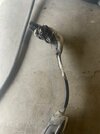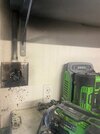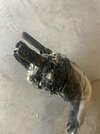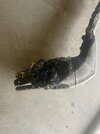Breakers usually have two mechanisms of tripping:
- Thermal trip - breaker gets too hot and it trips. Good for detecting long duration, excessive loads.
- Magnetic trip - too much current and it trips. Good for detecting high current under short periods of time.
Note that not all breakers include both! Check the specs on your specific breaker to confirm.
Dropping charge current a bit is very useful at reducing heat buildup - the amount of power dissipation due to resistance at a location goes up by the square of current. P = I^2 * R (P=Power, I = Current, R = Resistance) So if you drop the current by 50%, the amount of heat loss in the wires will be dropped by 75%. Going from 40 to 32A gets you 80% of the charging power, but power lost in the wires is 64% of the heat loss at 40A.
To drop the power lost in the wire by half from 40A, you would drop the charge current to about 28-29A.
I use a Gen2 Wall Connector and knowing that they are designed to handle up to 80A is nice when the car only charges at up to 48A. Just need to put it on a 100A circuit!







